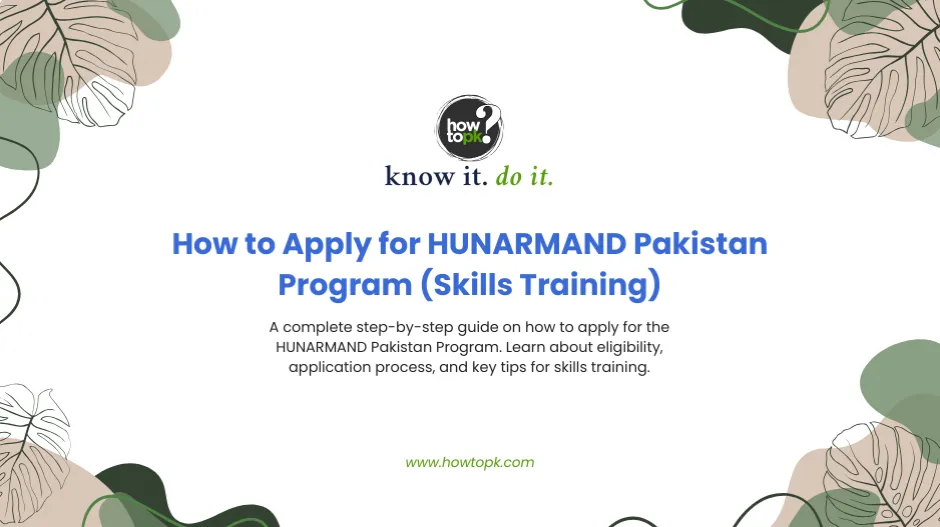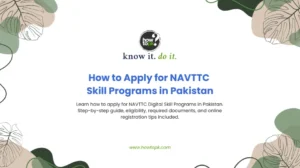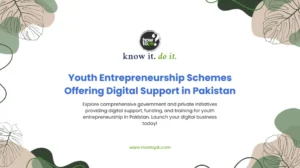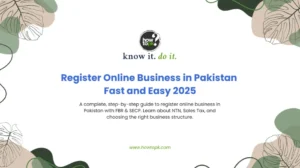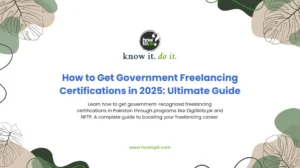Are you looking to enhance your skills, find a better job, or even start your own business here in Pakistan? The HUNARMAND Pakistan Program, a key initiative under the Prime Minister’s Kamyab Jawan Program, is designed to empower Pakistani youth with demand-driven technical and vocational skills. It’s a fantastic opportunity to transform your future, and this guide will walk you through every step of the application process, making it easy to understand and navigate.
Many young people feel uncertain about their career paths or lack the specific skills needed in today’s competitive job market. The HUNARMAND program aims to bridge this gap by offering high-quality training in various fields, from traditional trades to cutting-edge technologies. Don’t worry if you’re an absolute beginner; this guide is here to help you get started.
Understanding the HUNARMAND Pakistan Program
What is the HUNARMAND Program?
The HUNARMAND Pakistan Program, also known as “Skills for All,” is a nationwide initiative spearheaded by the Government of Pakistan. Its primary goal is to provide quality technical and vocational education and training (TVET) to the youth across the country. It falls under the umbrella of the Kamyab Jawan Program, which focuses on youth empowerment through various schemes, including loans, business support, and skills development.
This program is crucial for Pakistan’s economic growth because it addresses the unemployment challenge by equipping individuals with practical skills that are directly relevant to industry needs. Whether you’re interested in digital skills, traditional trades, or emerging technologies, there’s likely a course for you.
Why Should You Apply for HUNARMAND?
Applying for the HUNARMAND Pakistan Program can open up a world of opportunities. Here’s why it’s worth considering:
- Enhanced Employability: The skills you gain are highly sought after by employers, increasing your chances of securing a good job.
- Self-Employment Opportunities: Many courses provide the foundation to start your own business or work as a freelancer, giving you independence.
- Modern and Traditional Skills: The program offers a wide range of courses, from advanced IT skills like AI and blockchain to traditional crafts and trades.
- Government Support: Being a government-backed initiative, it often provides subsidized or free training, making quality education accessible to everyone.
- Nationwide Reach: The program aims to reach youth across all regions of Pakistan, including less-developed areas.
Step 1: Determine Your Eligibility
Who Can Apply?
Before you even think about filling out an application, it’s important to understand if you meet the basic criteria for the HUNARMAND Pakistan Program. While specific requirements can vary slightly depending on the course and the implementing institution, here are the general guidelines:
- Age: Generally, applicants should be between 18 and 35 years old. Some programs might have slightly different age limits, especially for specialized high-tech courses or those targeting specific demographics.
- Education: While a matriculation (10th grade) certificate is often preferred, many programs are designed for individuals with diverse educational backgrounds, including those with limited formal schooling. The focus is more on your aptitude and willingness to learn.
- Nationality: You must be a Pakistani national with a valid CNIC (Computerized National Identity Card) or B-Form (for those under 18 who might be eligible for certain programs).
- Employment Status: The program primarily targets unemployed or underemployed youth, but individuals looking to upskill or reskill may also be eligible.
Step 2: Research Available Courses and Institutions
Exploring Your Options
The HUNARMAND Pakistan Program offers a diverse range of courses. It’s crucial to choose a skill that aligns with your interests, career goals, and the market demand in your area. This isn’t just about getting any skill; it’s about getting the right skill.
Courses typically fall into categories such as:
- High-Tech Skills: Artificial Intelligence, Machine Learning, Data Science, Web Development, Mobile App Development, Cyber Security, Digital Marketing, E-commerce, Graphics Design, Animation, Cloud Computing.
- Traditional Trades: Electrician, Plumber, Welder, HVAC Technician, Auto Mechanic, Tailoring, Beautician, Chef, Construction trades.
- Emerging Technologies: 3D Printing, Robotics, Mechatronics, Blockchain.
- Soft Skills: Communication, Entrepreneurship, Project Management, IT Literacy.
How to Research Courses
- Visit Official Websites: The main portals for the HUNARMAND program, such as the NAVTTC website or the Kamyab Jawan Program’s skill development sections, often list available courses and partner institutions.
- Check Partner Institutions: Institutes like eHunar, PSDF (especially for Punjab), and provincial TEVTAs (e.g., KP-TEVTA, Sindh TEVTA) are key implementing partners and regularly announce new batches and courses. Explore their websites for detailed course outlines, durations, and locations.
- Local Skill Centers: Inquire at your local government technical and vocational training centers (GTTIs, GVTIs) or private institutes recognized by NAVTTC. They often have information about HUNARMAND-supported programs.
- Social Media and News: Keep an eye on official social media channels of government bodies (NAVTTC, Kamyab Jawan Program) and news outlets for announcements regarding new training cycles and registrations.
Tip: Don’t just look at the course name. Read the full course description to understand what you’ll actually be learning. Talk to people who have completed similar courses if possible.
Step 3: Prepare Your Documents
What Documents Do You Need?
Having all your documents ready saves a lot of hassle during the application process. While the exact list can vary slightly, here are the commonly required documents:
- Valid CNIC/B-Form: This is mandatory for identification. Make sure it’s updated and clearly legible.
- Educational Certificates: Copies of your academic qualifications (e.g., Matriculation, Intermediate, Bachelor’s degree, or any other relevant certificates). Even if the program doesn’t require high formal education, having these proofs helps.
- Domicile Certificate: A copy of your domicile certificate, verifying your permanent residency in a particular district or province of Pakistan. This is often required for provincial quotas or specific programs.
- Recent Passport-Sized Photographs: Usually 2-4 recent photographs with a blue or white background.
- Proof of Income/Unemployment (if applicable): Some programs might require a simple affidavit or a statement regarding your current employment status or household income, especially if they are need-based scholarships.
- Any Previous Skill Certificates: If you have any prior vocational training or relevant experience, provide copies of those certificates.
Step 4: The Application Process (Online & Offline)
The application for the HUNARMAND Pakistan Program typically involves either an online portal or an offline application through specific training institutes. Many programs, especially those under NAVTTC, are increasingly moving towards online applications for efficiency.
Applying Online (Most Common Method)
- Visit the Official Portal: Go to the relevant website (e.g., ehunar.org, or a specific portal linked from NAVTTC/Kamyab Jawan sites).
- Create an Account: Look for a “Sign Up” or “Register” button. You’ll typically need to provide your full name, CNIC, mobile number, and email address. You’ll also set a password. Make sure you use a valid email address as all communication will be sent there.
- Verify Your Account: You might receive a verification email or SMS with a code. Enter this code to activate your account.
- Fill Out the Application Form: Log in to your newly created account and navigate to the “Apply Now” or “Student Registration” section.
- Provide Personal Information: Fill in all required fields accurately. This includes your father’s name, date of birth, gender, marital status, permanent address, and contact details.
- Enter Educational Background: Provide details of your highest qualification, including the institute name, field of study, and year of completion.
- Upload Documents: Upload the scanned copies of your CNIC, educational certificates, domicile, and passport-sized photographs as per the specified formats and sizes.
- Select Your Course: From the list of available courses, select the one you wish to apply for. Some platforms allow you to choose a preferred institute or location.
- Review and Submit: Carefully review all the information you’ve entered. Check for any typos or missing details. Once you are satisfied, click the “Submit” button.
- Common Mistake: Not saving your progress or losing internet connectivity, forcing you to restart. Also, uploading blurry or incorrect documents is a common error.
Applying Offline (Less Common, but Still Possible)
While many programs are online, some regional or specialized training centers might still offer offline application forms. This often happens for specific trades or community-based programs.
- Obtain the Application Form: Visit the designated training institute or a NAVTTC/TEVTA office in your city. Ask for the HUNARMAND Pakistan Program application form.
- Fill Out the Form Manually: Complete the form neatly and accurately in block letters.
- Attach Documents: Attach photocopies of all required documents (CNIC, educational certificates, domicile, photographs). Ensure they are properly attested if specified.
- Submit the Form: Submit the completed form along with all attachments at the designated submission counter. Get an acknowledgment receipt or a stamp on your copy of the form.
Step 5: The Admission Test/Interview
What to Expect
Once your application is submitted, you might be called for an admission test or an interview, especially for in-demand courses or competitive fields. This step helps the institutions assess your aptitude, basic knowledge, and motivation.
- Admission Test: This could be a basic aptitude test, a general knowledge test, or a simple assessment related to the field you’ve applied for (e.g., basic math for engineering trades, or English literacy for digital skills).
- Interview: You might have a short interview where instructors or program coordinators will ask about your interest in the course, your career aspirations, and your commitment to completing the training.
Why are Tests/Interviews Conducted?
These assessments ensure that the selected candidates have the basic understanding and dedication required for the training. They also help filter candidates for limited spots, ensuring that the most suitable individuals benefit from the program.
How to Prepare for the Test/Interview
- Brush Up on Basics: For general aptitude tests, revise basic math, English, and general knowledge.
- Research the Course: Have a good understanding of what the course entails and why you want to pursue it.
- Show Enthusiasm: During the interview, express your genuine interest and commitment to learning. Be polite and confident.
- Dress Appropriately: For an interview, dress neatly and modestly, showing respect for the process.
- Arrive on Time: Punctuality is key. Plan your commute to arrive at least 15-20 minutes before the scheduled time.
Common Mistake: Underestimating the importance of the test/interview or not being able to articulate your motivation clearly.
Step 6: Enrollment and Commencement of Training
Confirmation of Admission
If you successfully pass the test/interview and meet all criteria, you will receive an admission confirmation. This could be via email, SMS, or a notice displayed at the institute. The confirmation will typically include details about the course start date, timings, and any further instructions.
What to do Upon Confirmation
Once confirmed, you will be required to complete the enrollment process. This might involve:
- Paying a Nominal Fee (if applicable): While many HUNARMAND programs are free or heavily subsidized, some might require a small registration fee or a security deposit which is refundable upon completion.
- Submitting Original Documents for Verification: You might need to bring your original CNIC and educational certificates for a final verification check.
- Collecting Course Material: You’ll likely receive your student ID, course schedule, and any initial learning materials.
Why Enrollment is Important
This step formalizes your participation in the program. Completing enrollment on time ensures your spot in the chosen course and allows the institution to finalize its batch planning.
How to Ensure Smooth Enrollment
- Respond Promptly: If there’s a deadline for enrollment, make sure to complete it well before the cut-off.
- Clarify Any Doubts: Don’t hesitate to ask the institute staff if you have any questions about the schedule, faculty, or course structure.
- Attend Orientation (if any): Some institutes conduct an orientation session for new students. Attending this can be very helpful for understanding the program rules, expectations, and resources available.
Step 7: Actively Participate and Complete the Course
Maximizing Your Learning Experience
Getting into the HUNARMAND Pakistan Program is just the beginning. The real benefit comes from your active participation and commitment to learning throughout the course.
- Create a Study Schedule: Allocate dedicated time for studying and practicing outside of class hours.
- Form Study Groups: Collaborate with classmates to solve problems and discuss concepts.
- Seek Additional Resources: Don’t rely solely on classroom material. Explore online tutorials, videos, and books to deepen your understanding.
Step 8: Certification and Career Support
Receiving Your Certification
Upon successful completion of the course and any final assessments, you will be awarded a recognized certificate. These certificates, often issued by NAVTTC or the relevant provincial TEVTA, are valuable credentials that validate your newly acquired skills. They significantly boost your resume and increase your marketability.
Career Placement and Entrepreneurial Support
Many HUNARMAND-affiliated institutions offer career counseling and job placement assistance. They often have ties with industries and can help connect you with potential employers. Some programs also provide guidance for starting your own small business or pursuing freelancing opportunities.
- Attend Career Fairs: Participate in any job fairs or recruitment drives organized by your institute.
- Prepare Your CV: Work with career counselors to build a professional CV highlighting your new skills.
- Practice Interview Skills: Take advantage of mock interviews or workshops to hone your interview techniques.
- Explore Entrepreneurship: If you have a business idea, seek guidance on developing a business plan and accessing small loans or grants (e.g., through other Kamyab Jawan Program components).
Important Tips and Common Challenges
Tips for a Successful Application
- Stay Informed: Regularly check the official websites of NAVTTC, Kamyab Jawan Program, and key provincial TEVTAs for new program announcements and application deadlines.
- Apply Early: Don’t wait until the last minute to apply. Spots can be limited, especially for popular courses.
- Read Everything Carefully: Whether it’s online instructions or an application form, read every detail to avoid errors.
- Keep Records: Maintain a folder, both physical and digital, of all your submitted documents, application numbers, and confirmation emails.
Common Challenges and How to Address Them
- Limited Seats: Some high-demand courses have limited enrollment. This is where merit (based on application, test, and interview) plays a big role. Do your best in all stages.
- Technical Issues (Online Application): If you face problems with the online portal (e.g., website not loading, upload errors), try again later, use a different browser, or contact the helpline mentioned on the website.
- Information Gaps: Sometimes, specific details about eligibility or course schedules might not be immediately clear. Don’t hesitate to call the helpline numbers or visit the institutions directly.
- Travel/Logistics: If your chosen institute is far, consider the logistics of daily commute before applying. Some programs might offer hostel facilities, but this is less common.
- Language Barrier: While many courses are taught in Urdu, some technical fields might use English terms. Ensure you are comfortable with the medium of instruction.
Conclusion
The HUNARMAND Pakistan Program offers a golden opportunity for the youth of Pakistan to acquire valuable skills, improve their livelihoods, and contribute to the nation’s development. By following this comprehensive guide, you can confidently navigate the application process and take a significant step towards a brighter future. Remember, success in this program is not just about getting admitted; it’s about the dedication you show throughout the training and your commitment to utilizing your newly acquired skills.
Don’t let hesitation hold you back. Research, prepare, apply, and seize this chance to become a skilled and empowered individual ready to face the challenges and opportunities of the modern world. Khuda Hafiz and best of luck!
Resources
| Organization | Official Website |
|---|---|
| NAVTTC | https://navttc.gov.pk |
| Prime Minister’s Youth Programme (Kamyab Jawan) | https://pmyp.gov.pk |
| Kamyab Jawan Loan Portal | https://kamyabjawan.gov.pk |
| eHunar (Hunarmand Pakistan) | https://ehunar.org |
| Punjab Skills Development Fund (PSDF) | https://www.psdf.org.pk |
| TEVTA Punjab | https://tevta.gop.pk |
| Sindh TEVTA (STEVTA) | https://stevta.gos.pk |
| KP-TEVTA | https://kptevta.gov.pk |

